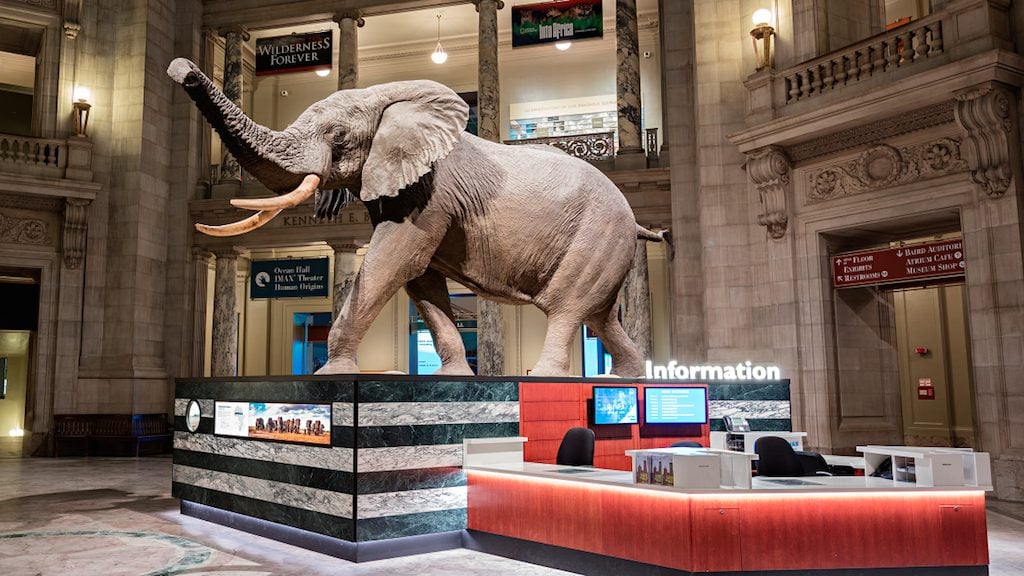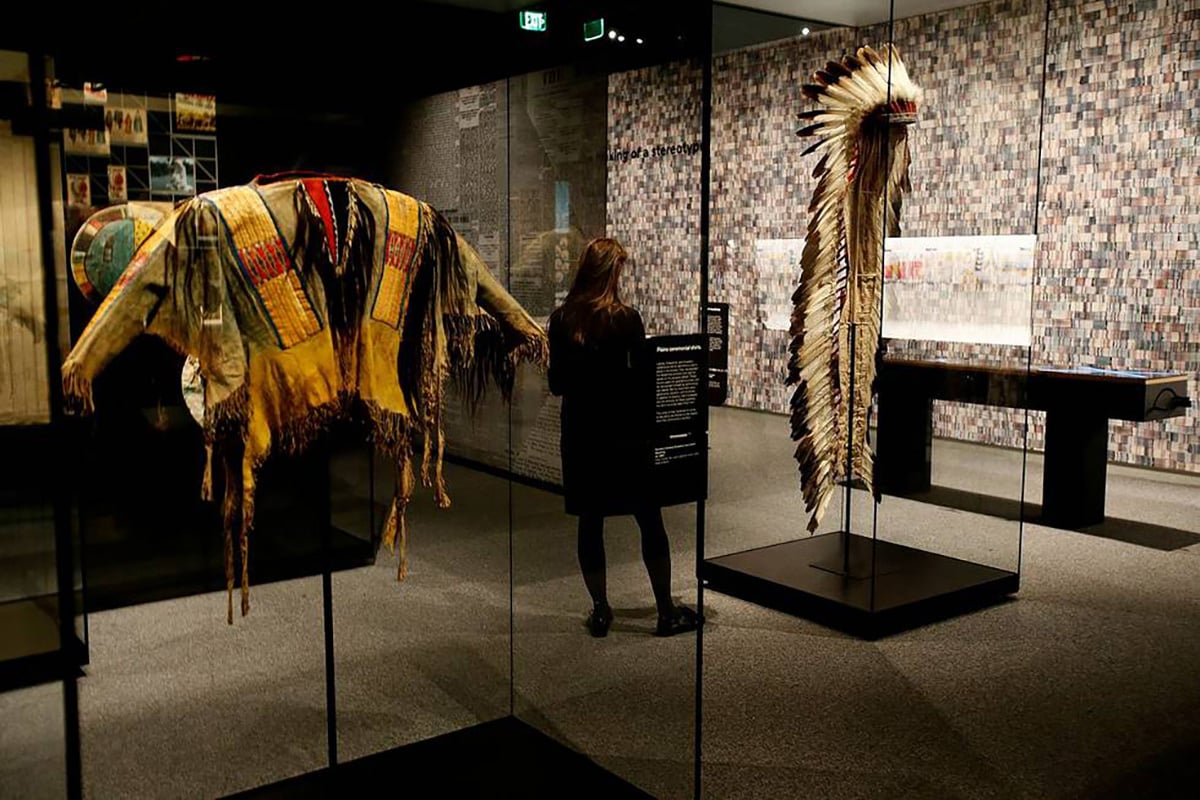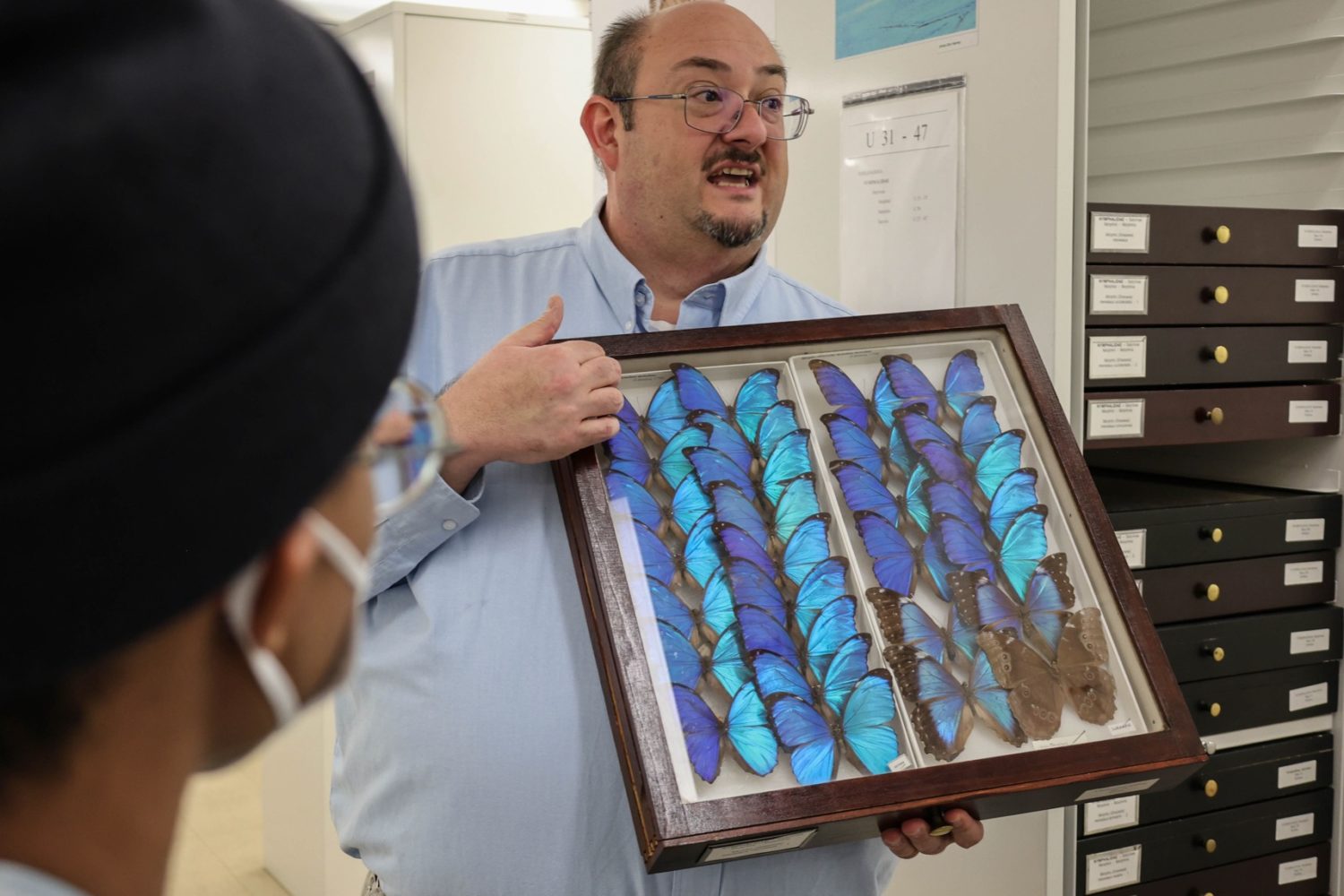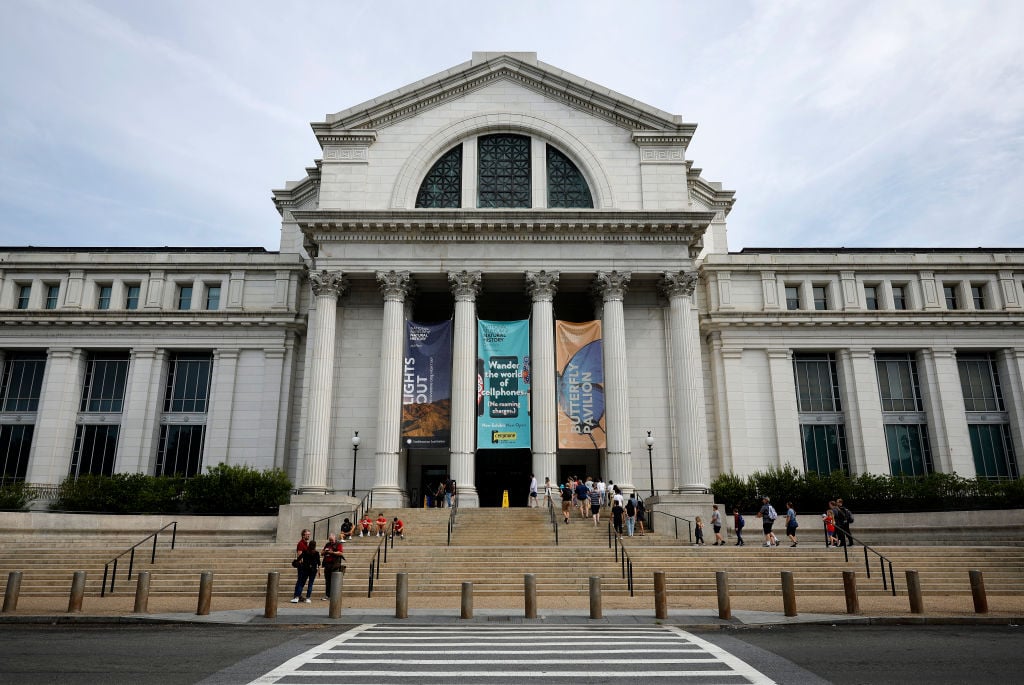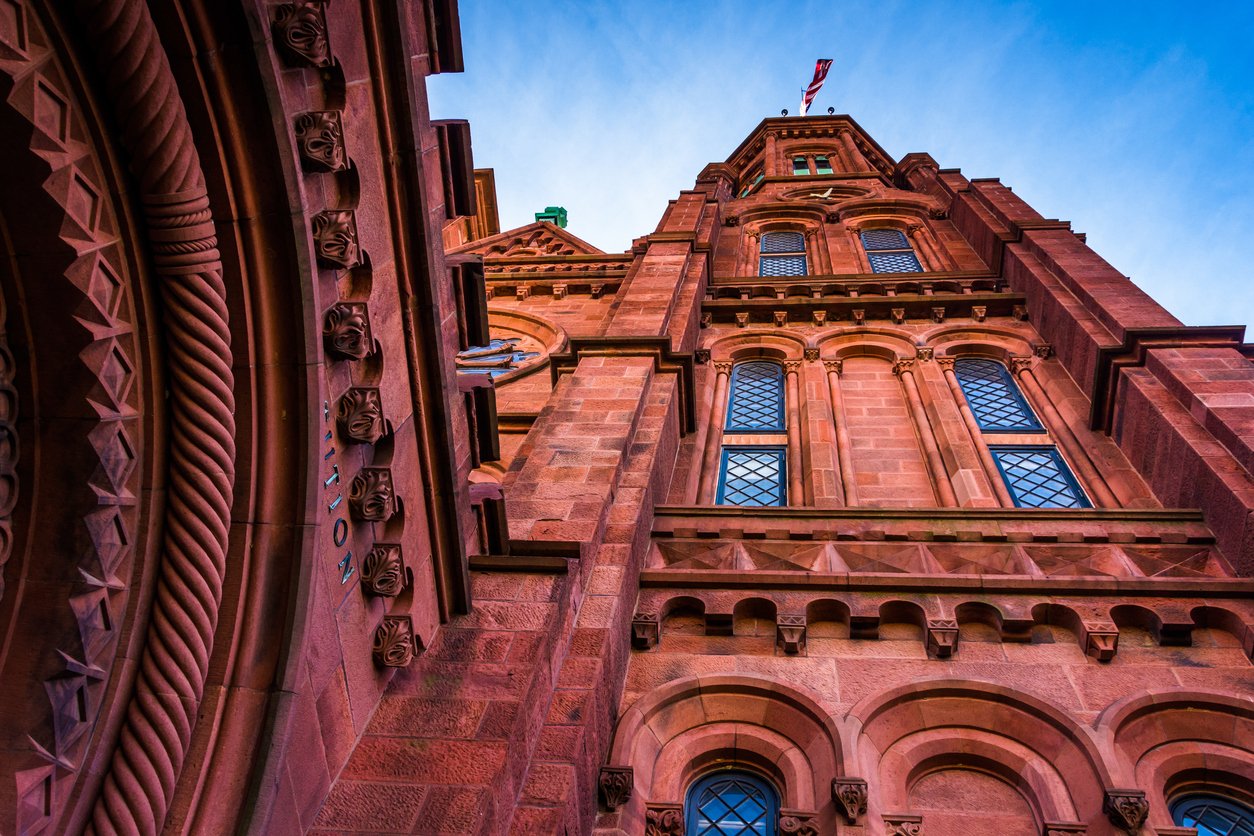The experiences of soaring over the Amazon canopy or exploring the depths of the ocean aren’t things most people can count on doing in their lifetimes. But IMAX films at museums like the Smithsonian National Museum of Natural History have long provided visitors with the next best thing.
But immersive nature films presented on a huge screen may have had their day at the Smithsonian. The natural history museum’s Samuel C. Johnson IMAX Theater is scheduled to close September 30, to make way for an expansion of the food court, which the Smithsonian says is currently incapable of handling demand from visitors. According to a statement from museum director Kirk Johnson, “The restaurant planned for the West Court will alleviate those pressures and enable families to comfortably spend more time in the museum. The changes to the West Court will also offer more space for public events, displays and educational activities.”
But not everyone is convinced the closure is the best thing for the museum. A group of IMAX producers and directors called Save Our IMAX are leading the opposition and calling for a delay in the decision to close the theater through a Change.org petition.

“We were all just absolutely aghast and taken aback because there had been no public communication of this,” says Taran Davies, whose company, Cosmic Picture, produced one-time Smithsonian films Journey to Mecca and Jerusalem. “We sort of wracked our minds about what we could do. And we understood that there was nothing we could do, that this was going to happen.”
The group is seeking a stay of execution for the theater. Davies says the filmmakers and their supporters are concerned that there’s been no public input on the project and that the demolition of the theater would mean losing what they call the United States’ top venue for educational nature films.
Save Our IMAX also takes issue with part of the reasoning given for the theater’s closure. The museum has stated that a decrease in ticket sales is partly responsible for the theater’s demise. But the theater’s defenders say that the Smithsonian is wrong, and that ticket sales have increased from 265,000 in 2014 to 310,000 in 2016. While it’s true there’s been an increase over the past three years, Randall Kremer, the Museum of Natural History’s spokesman, says the overall trend is still downward. The theater sold 702,350 tickets in its first year after it opened in 1999, but continued to see fewer and fewer sales over the 15 years, hitting a low in 2014.
Davies suggests ticket prices are a problem. “It’s too expensive for the average family,” he says. “What if they discounted the tickets for families and kids? You could double the amount of people who come to see a film. Have they considered that as an approach?”
Davies is also concerned that not enough care has gone into the decision to close the theater. He pointed to the removal of the IMAX ticket booth and signage from the main lobby of the museum as indications that the museum was not doing everything it could do make the theater profitable and posed the question whether or not the museum explored other options before choosing to replace the theater with an expanded restaurant area.
In an email, Kremer writes that, “Numerous options were explored beginning more than four years ago. Tremendous care and consideration have gone into our current plans.” Johnson’s statement also pointed out that the changes to the West Court area (where the IMAX theater is currently) will offer more space for events, displays, and activities.
As for the IMAX programming itself, many have noted that the Smithsonian still has two other properties which feature IMAX screens: the National Air and Space Museum and the Udvar-Hazy Center in Chantilly. “There will be opportunities to feature nature-related programs at the other Smithsonian IMAX theaters, but nothing is currently scheduled,” Kremer says. Whether or not nature programming will be featured at the other locations will rest with the Smithsonian Business Enterprise team and the individual museums.
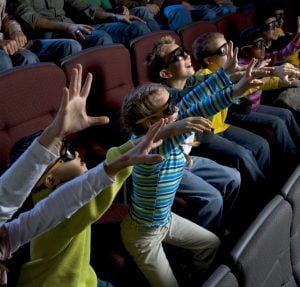
Davies says that’s not enough. In his opinion, showing nature films at other Smithsonian sites would go against the missions of the those museums.
“This is a sop to the public, and it’s the grossest form of misleading to suggest, ‘Oh, don’t worry, folks. We can take these films about bugs and play them at Air and Space,” he says. “You’re undermining the whole mission. Why do people come to museums in the first place? They want to learn about the subject of whatever the museum is showing. It’s just unacceptable.”
The Johnson Theater’s fans would like to see the food-court expansion pause in favor of a third-party review, along with an apology for what they feel are misleading statements about attendance numbers and an explanation for the removal of the IMAX ticket booth and posters. But so far the outlook looks grim for those who would like to see the theater stay. Save Our IMAX has yet to be directly contacted by the museum with any response to their concern.
Those who’d like to see the Samuel C. Johnson IMAX Theater keep screening films can get information on who to contact through Save Our IMAX’s “Take Action” page. But whether you’re concerned about the theater’s closing or not, now would be the time to go catch a movie on DC’s largest IMAX. It may not be around much longer.

